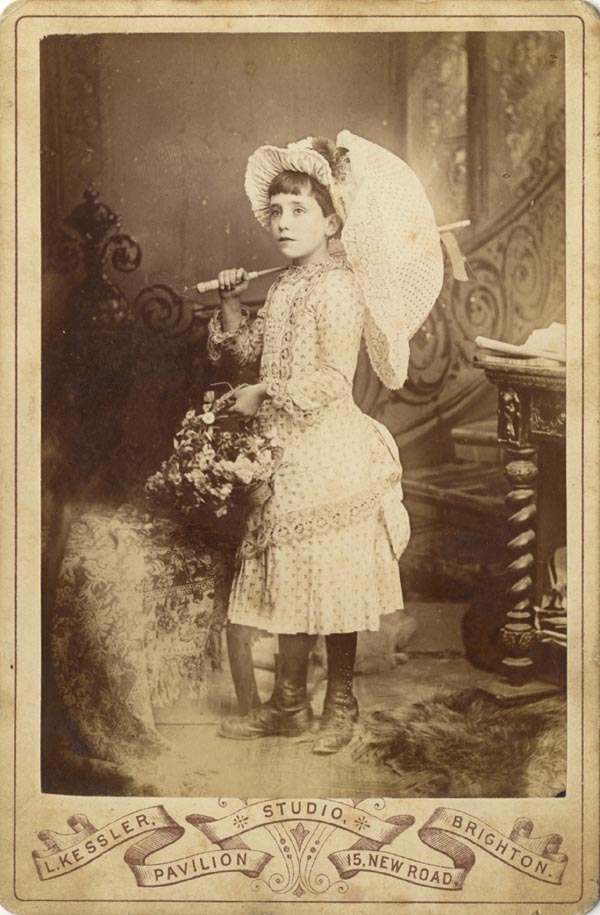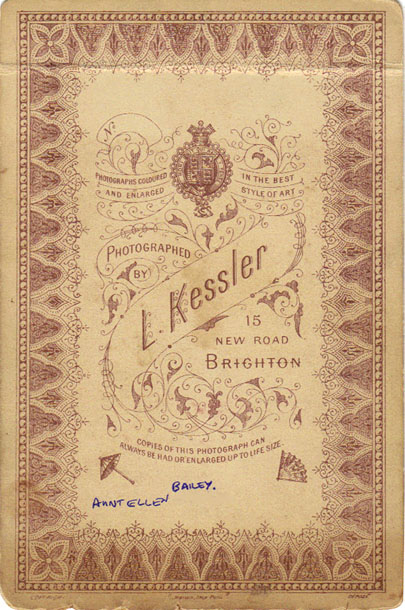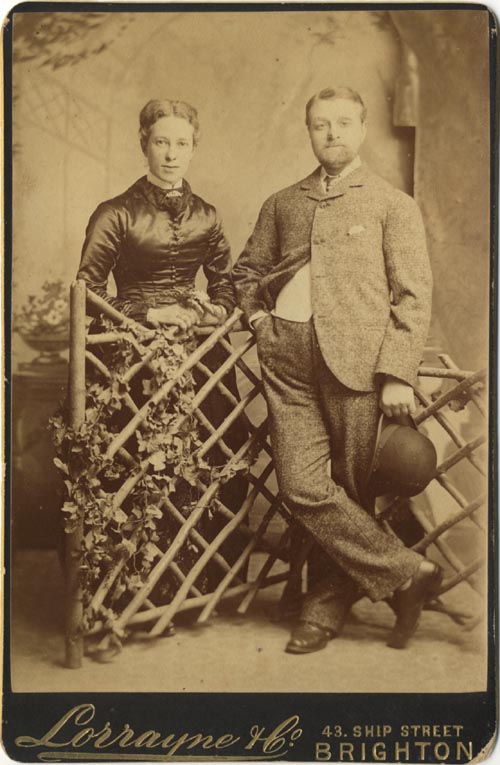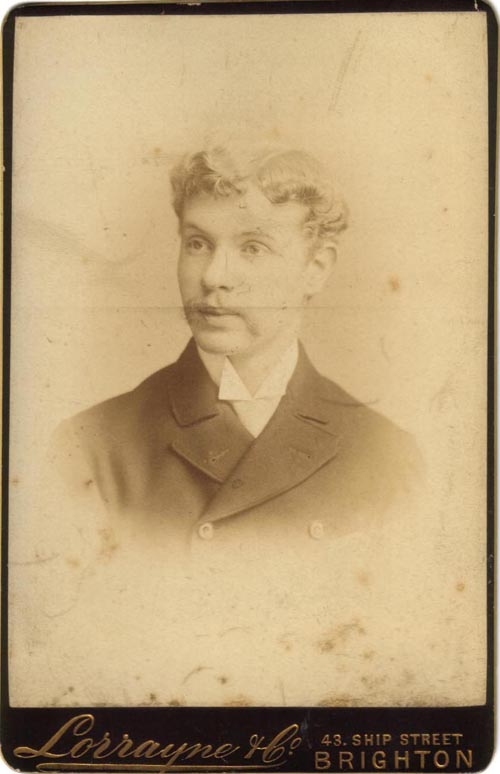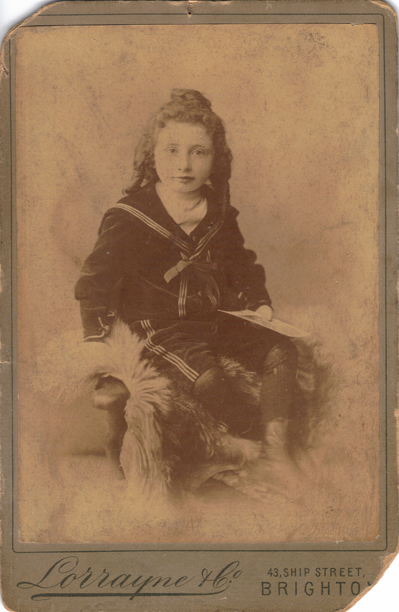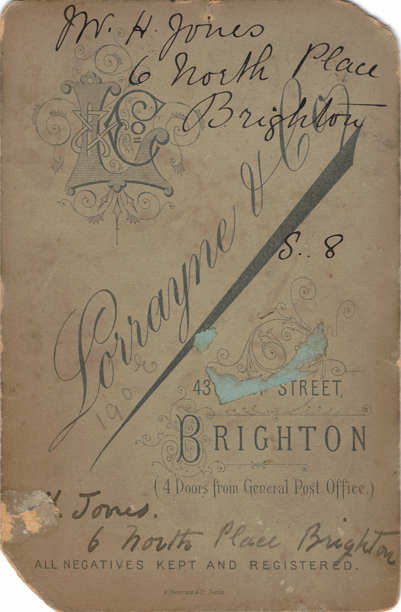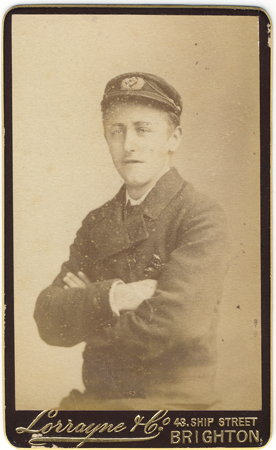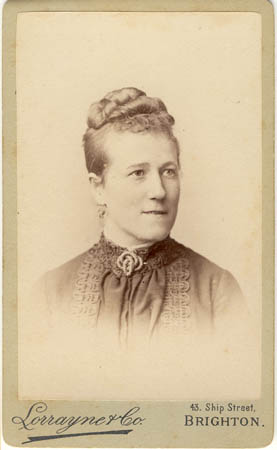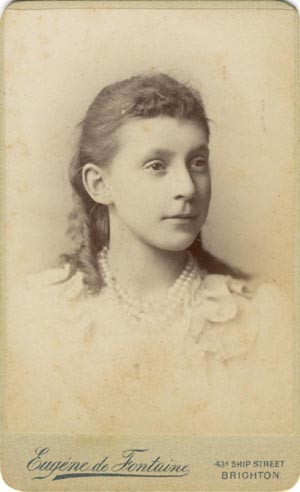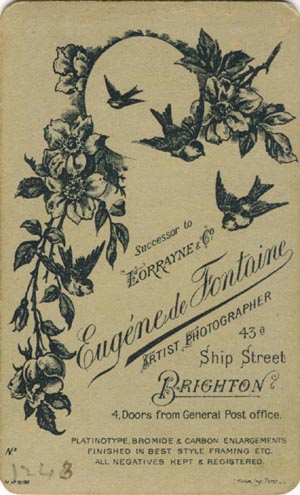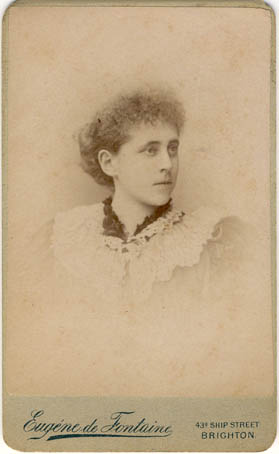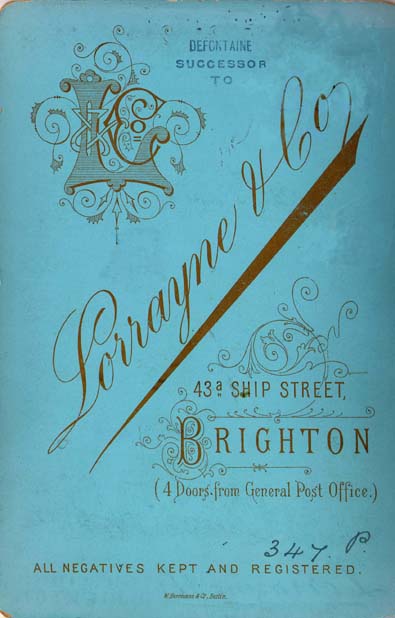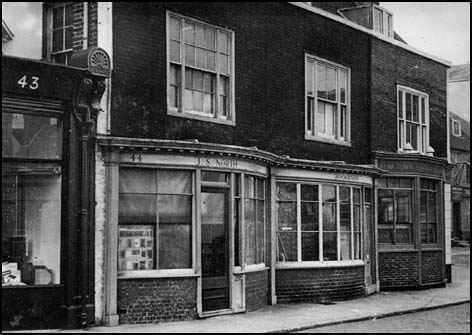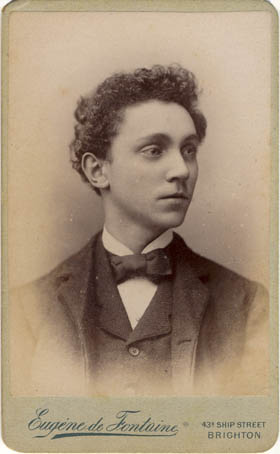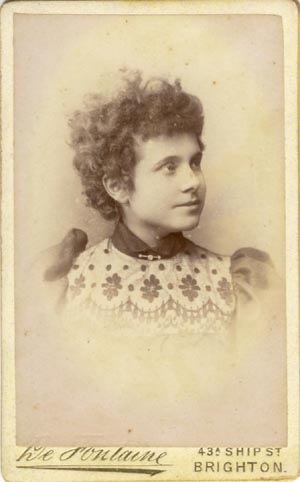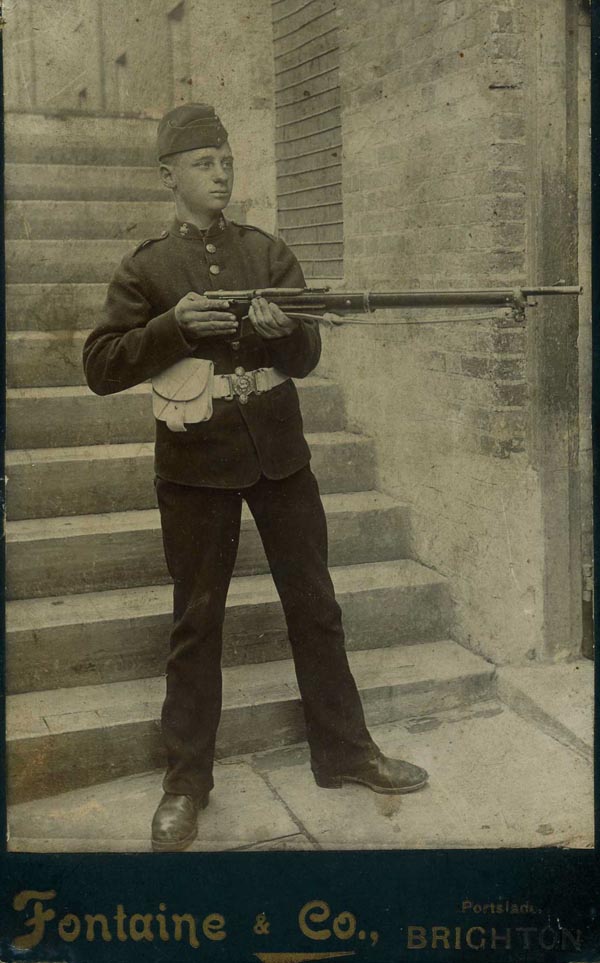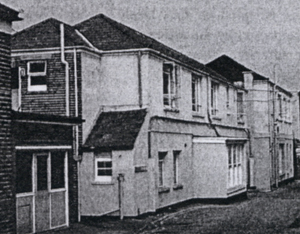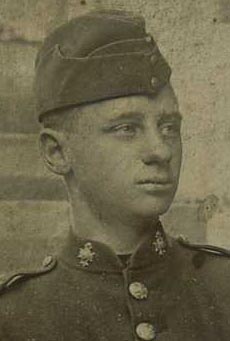| William Henry Kessler
(1859-1929) William Henry Kessler was the son of Ludwig Kessler, a German-born musician, and his English wife Ann Waghorn (formerly Goldsmith). William Henry Kessler was born on 5th April 1859 at his parent's home on Victoria Road, Tunbridge Wells, Kent. Ludwig Kessler, William's father, was born in 1834 in the German state of Hesse. In 1855, Ludwig Kessler married Ann Waghorn (born c1834) of Kent and settled in Tunbridge Wells, where William and his brothers were born. The Kessler family moved to New Cross and then to Mile End in East London. Ludwig Kessler died in Mile End in 1872 at the age of 37. From this date, William and his brothers were brought up by their widowed mother in London. Initially, William Kessler earned his living as a musician, as his father had done before him. Around 1875, the young musician arrived in Brighton, where he met publican's daughter Eliza (Elizabeth) Bailey (born 1861, Brighton). The couple married in Brighton on 11th December 1876. On the marriage certificate, seventeen year old William Kessler gave his occupation as "Teacher of Music". Two months later, on 11th February 1877, William and Eliza became the parents of a baby girl, who was named Mary Annie Louise Kessler. William and Eliza found lodgings at 17 Upper North Street, Brighton, where their son, Charles Ludwig Kessler, was born on 25th May 1879. By this date, William Kessler was working as a photographer as well as a musician. When the 1881 census was taken, William Kessler and his family were living at 44 Gardner Street, Brighton :
William Kessler was possibly earning a living as an itinerant photographer and musician at the time of the 1881 census. Eventually, William Kessler might have found employment in one of the thirty or so photographic studios which were operating in Brighton during this period. William Kessler's wife Elizabeth was pregnant with their third child when the 1881 census was carried out. On 26th July 1881, Eliza Kessler gave birth to a baby boy, who was named Arthur Francis Kessler. When young Arthur was christened at Brighton's Chapel Royal on 4th July 1883, William Kessler's profession was entered as "Musician" in the register of baptisms. [ When Eliza Kessler died in 1942, the informant advised the registrar that Eliza's late husband had been a "Music Composer" ]. William's fourth child, Harold Kessler, was born in Brighton on 18th July 1883. When Harold's birth was registered, William Kessler gave his occupation as "Photographer" and his home address as 10 Cheltenham Place, Brighton. |
 [ABOVE] A portrait of a young William Kessler (1859-1929), photographed in December 1874, shortly before he arrived in Brighton as a teenage musician. William Kessler's father, Ludwig Kessler (1834-1872) was a professional musician from Germany. From 1875, William Kessler, who was then in his teens, earned his living as a professional musician. On the evidence of this portrait, William Kessler was a trumpeter or cornet player. There is also documentary evidence that William Kessler was a "teacher of Music" and a composer of music. This portrait was taken in Tunbridge Wells in the studio of David Robert Everest at 40 Grosvenor Road, Tunbridge Wells, and is inscribed "yours faithfully, L. W. Kessler, Dec.1874". [PHOTO: COURTESY OF PETER L. KESSLER] |
||||||||||||||||||||||||||||||



